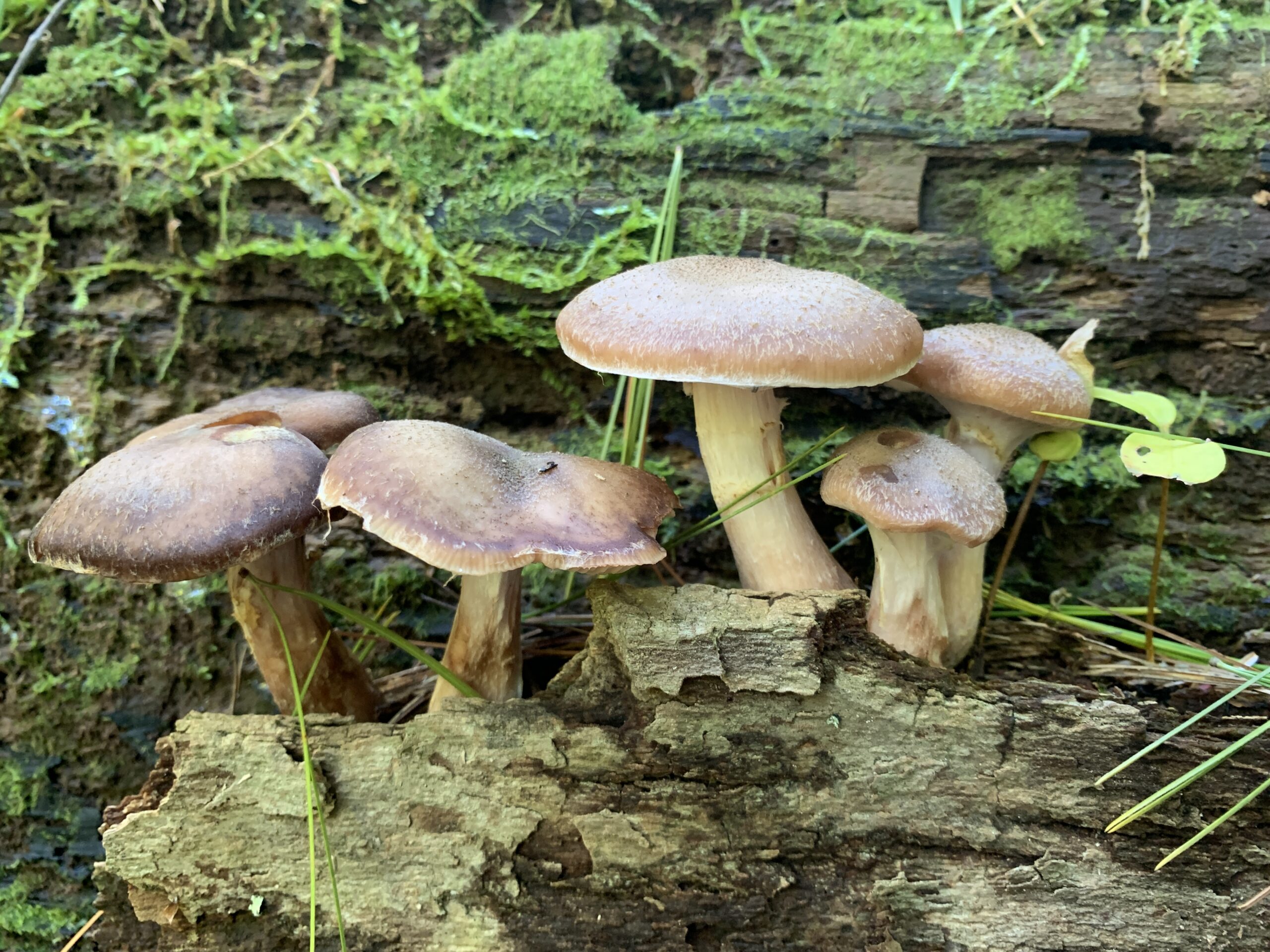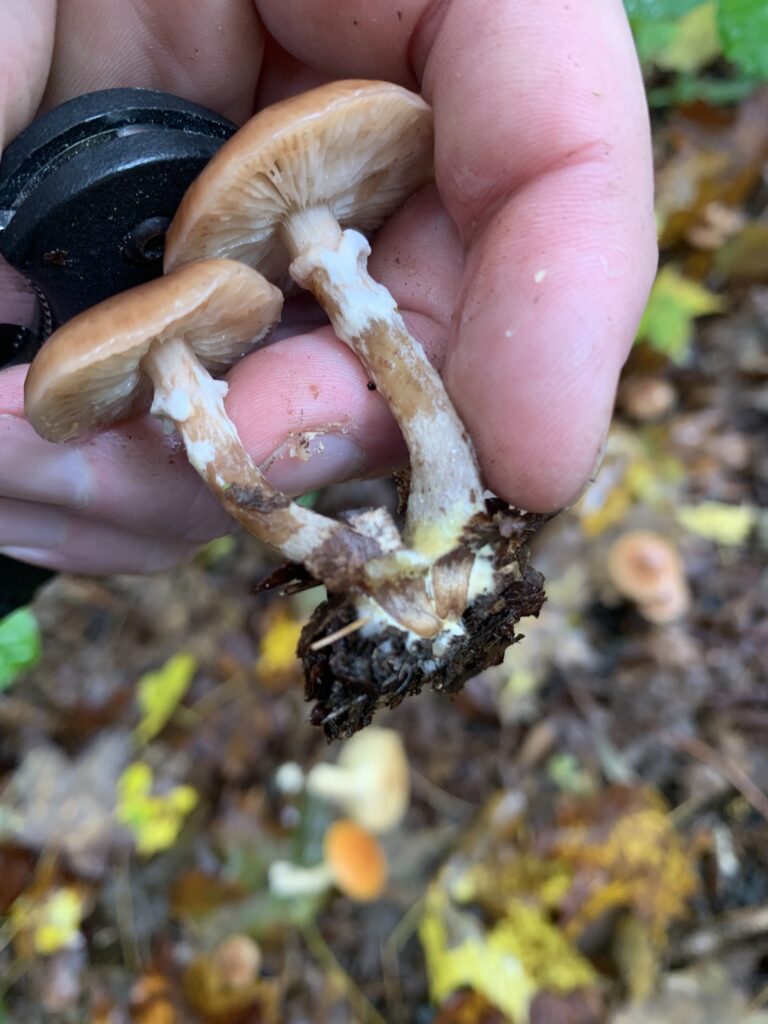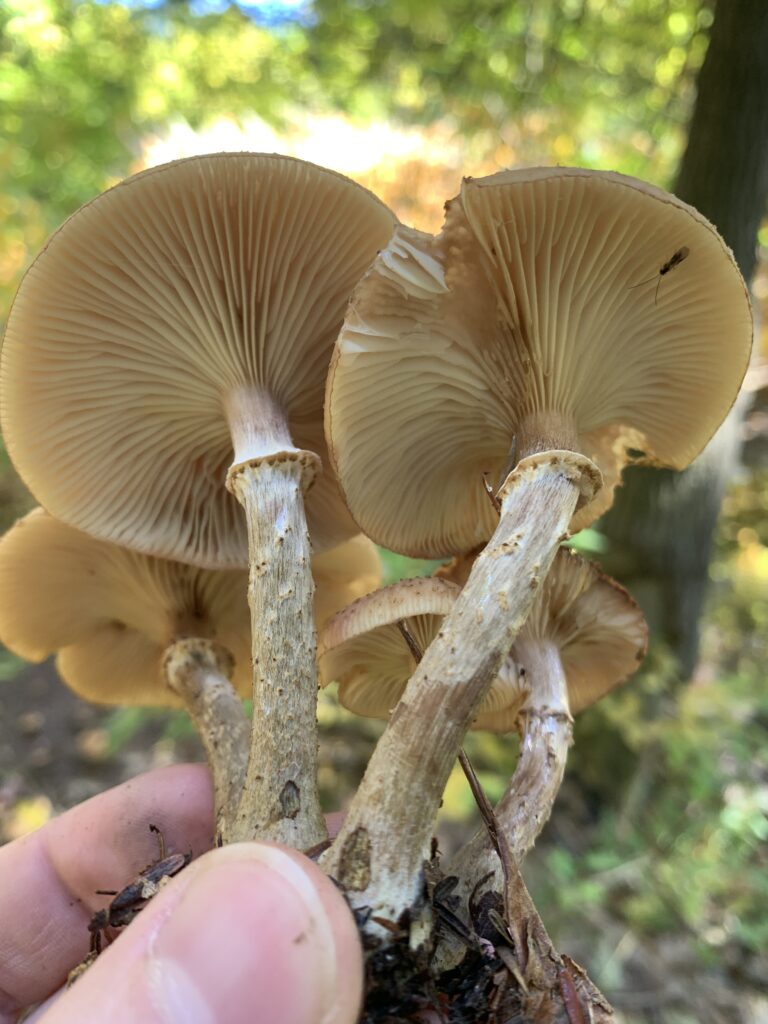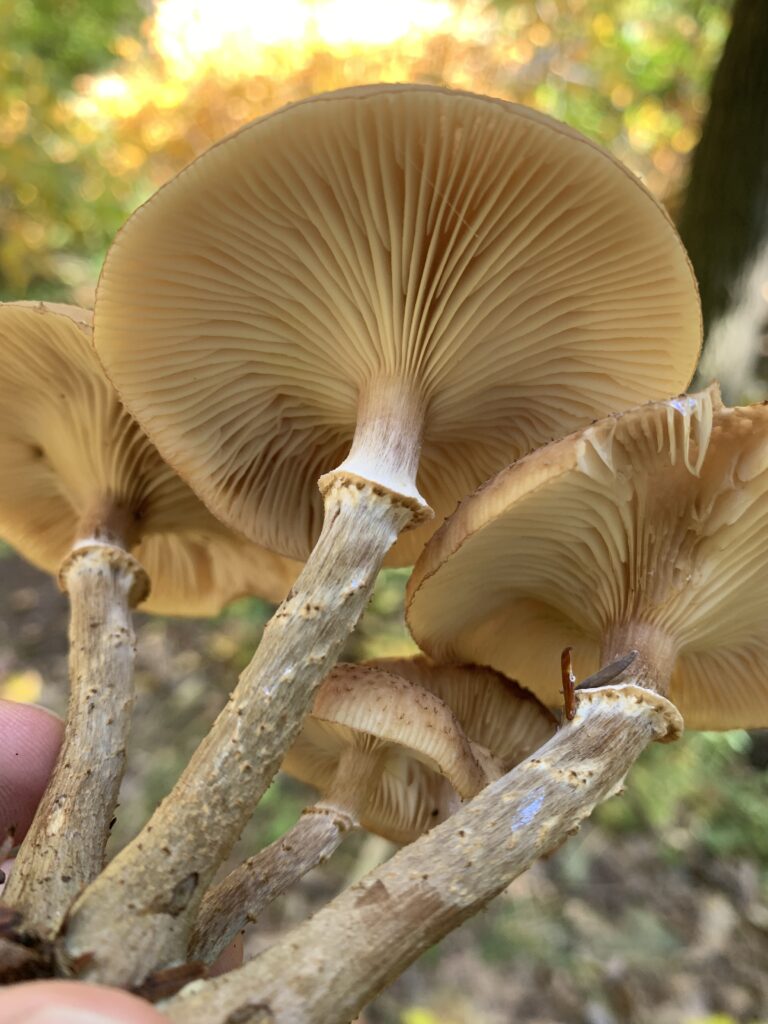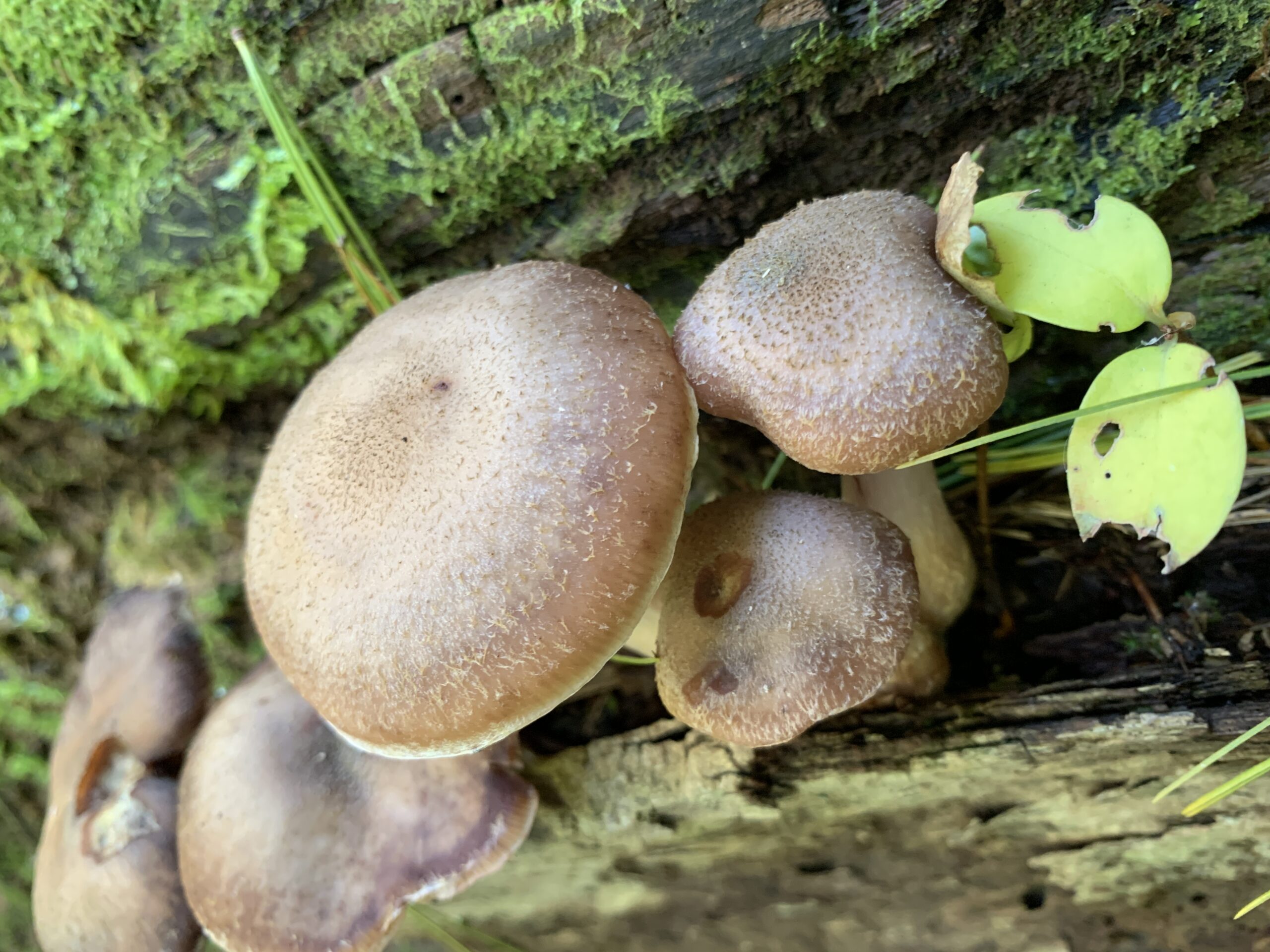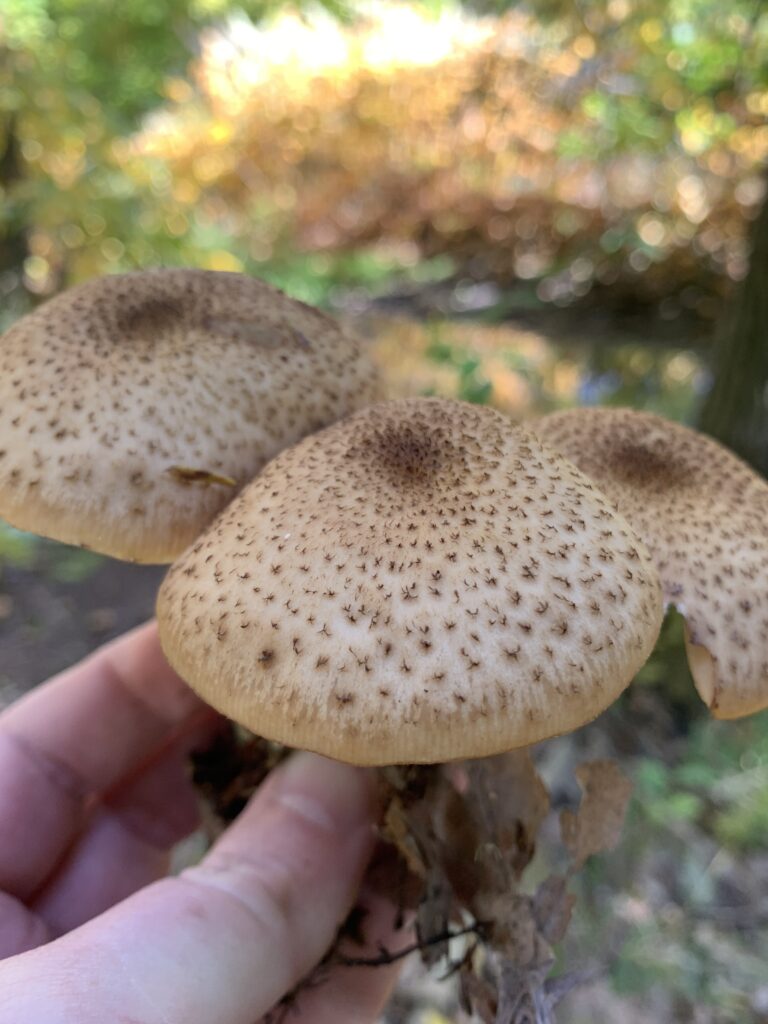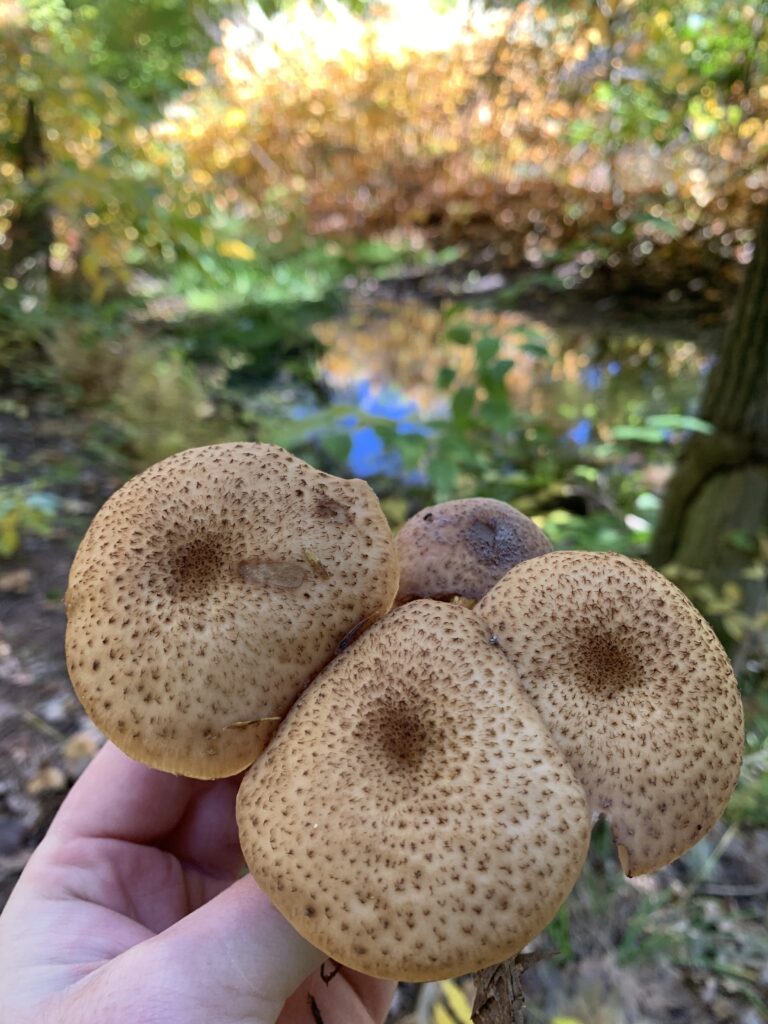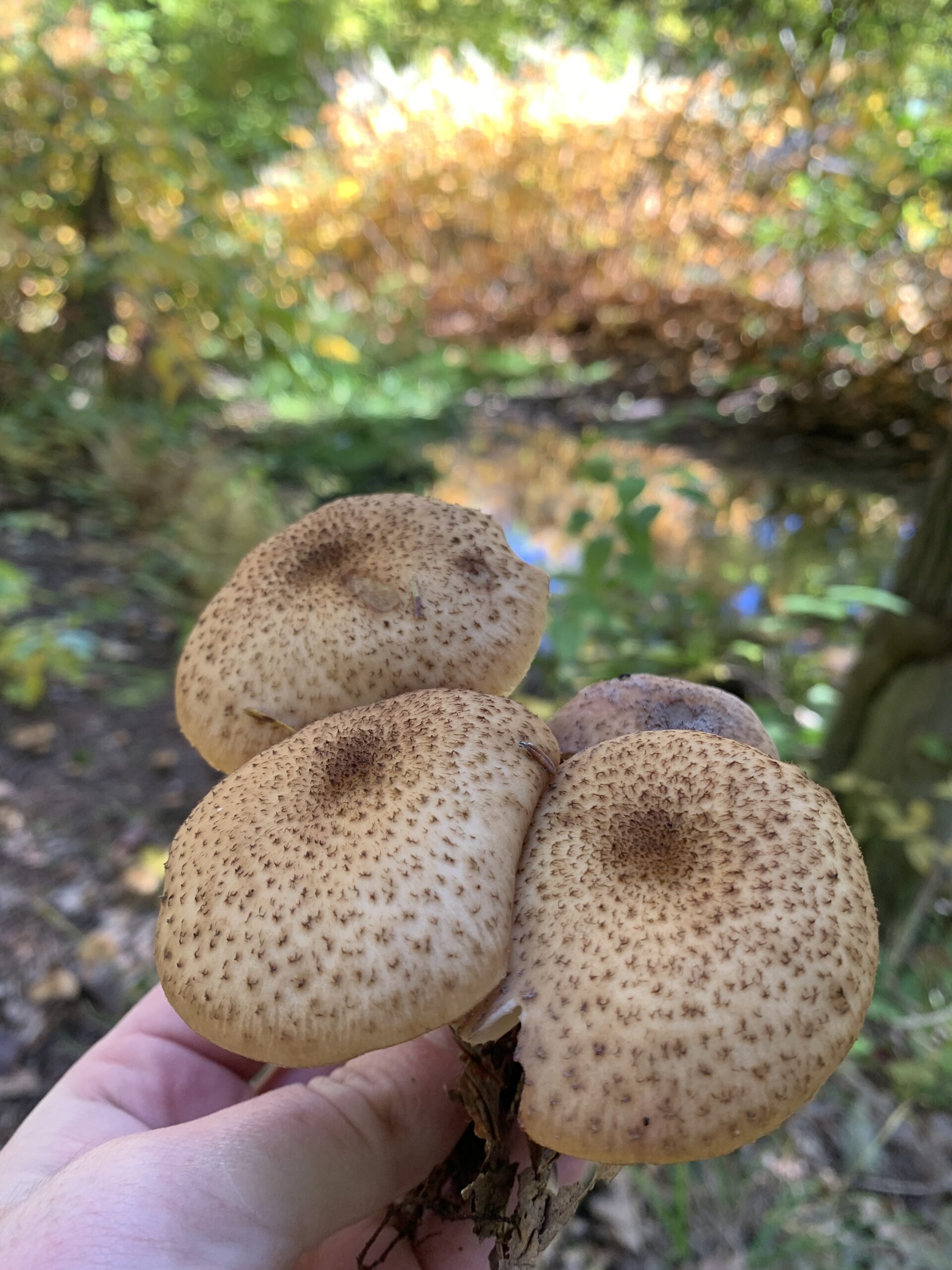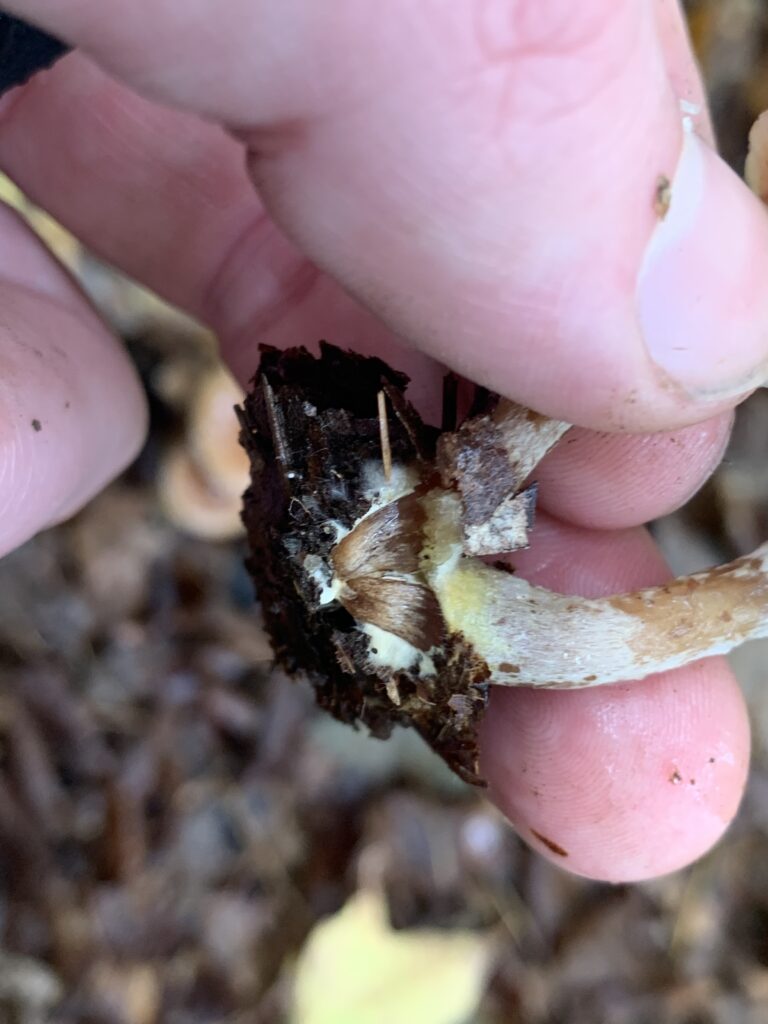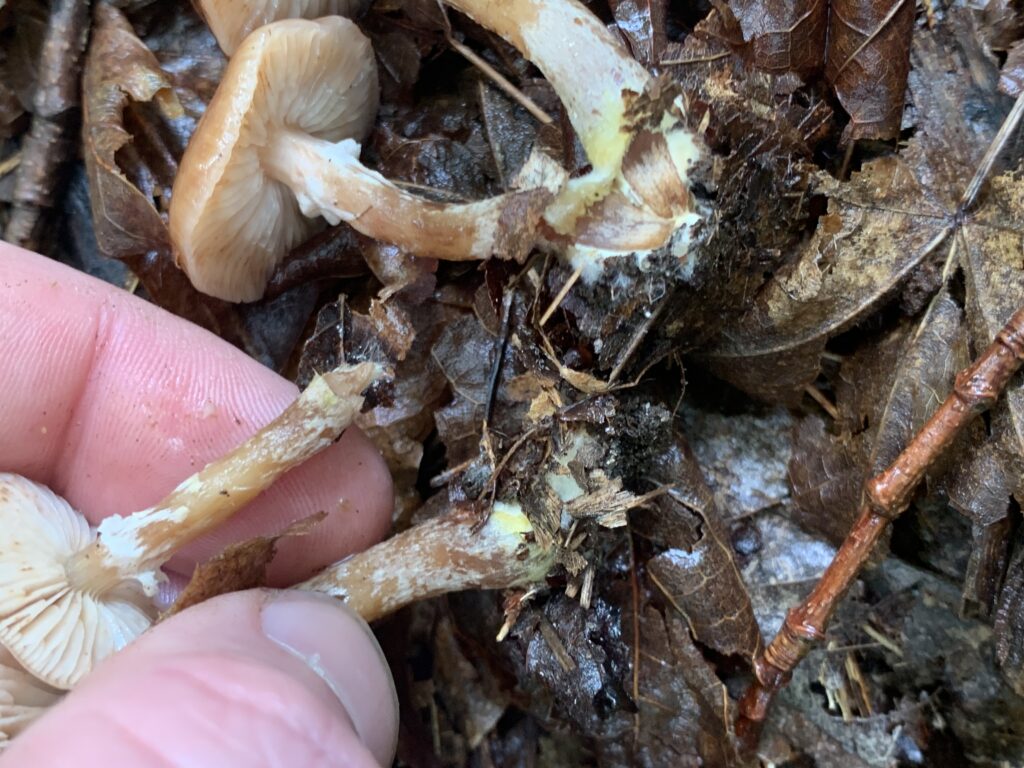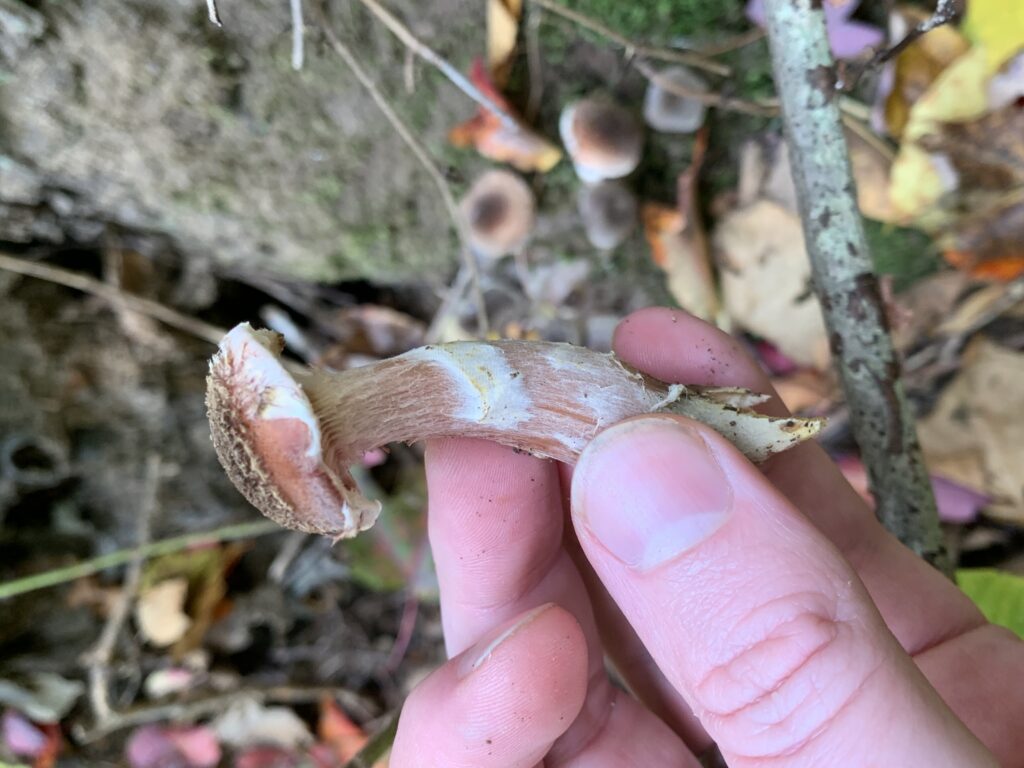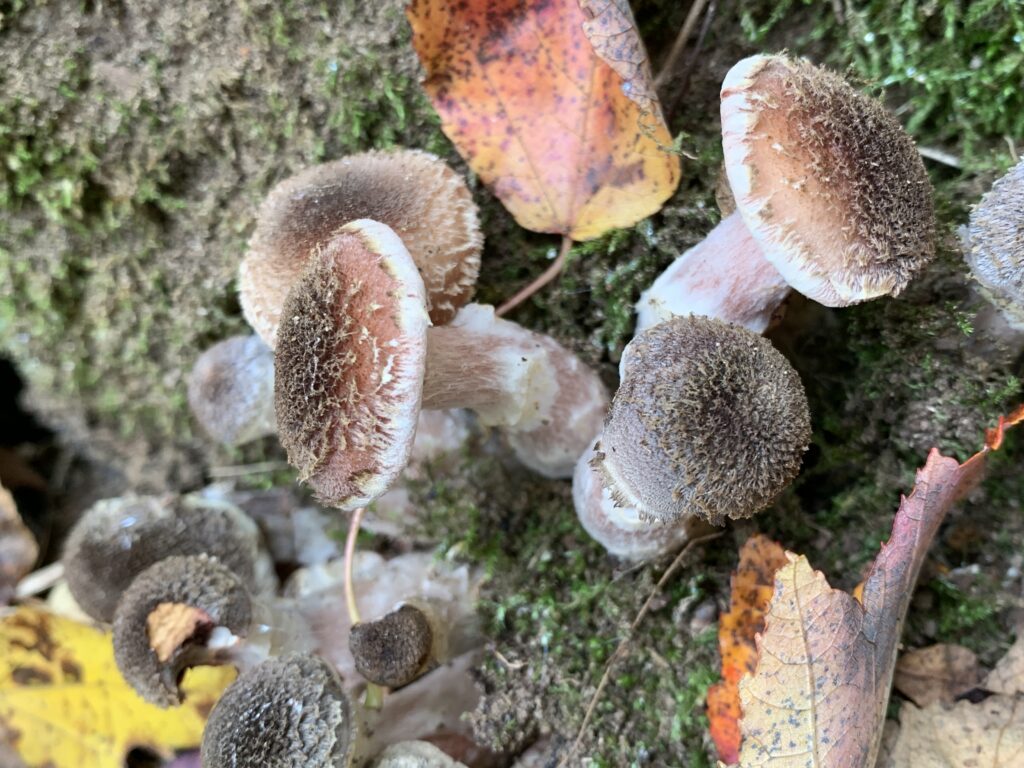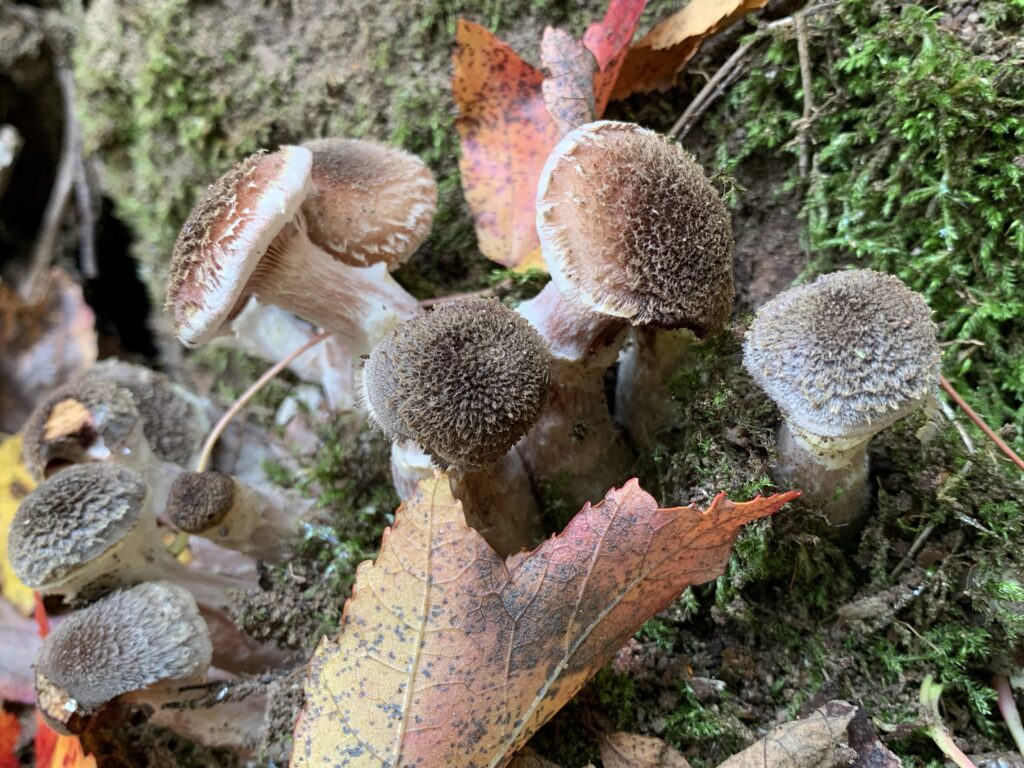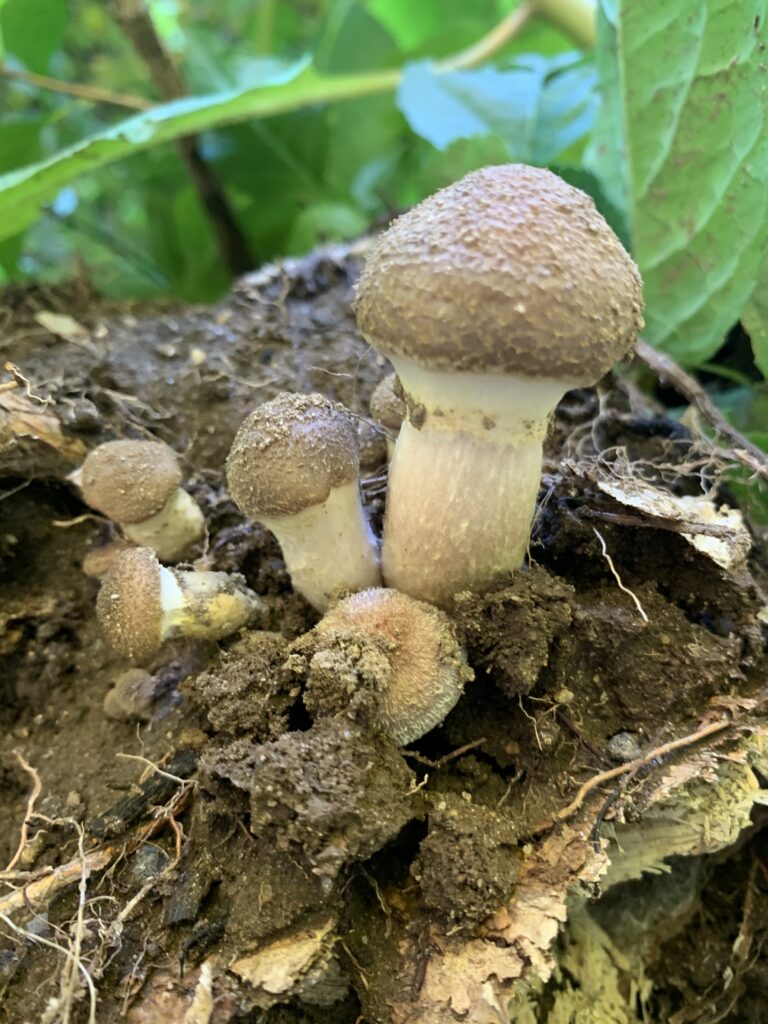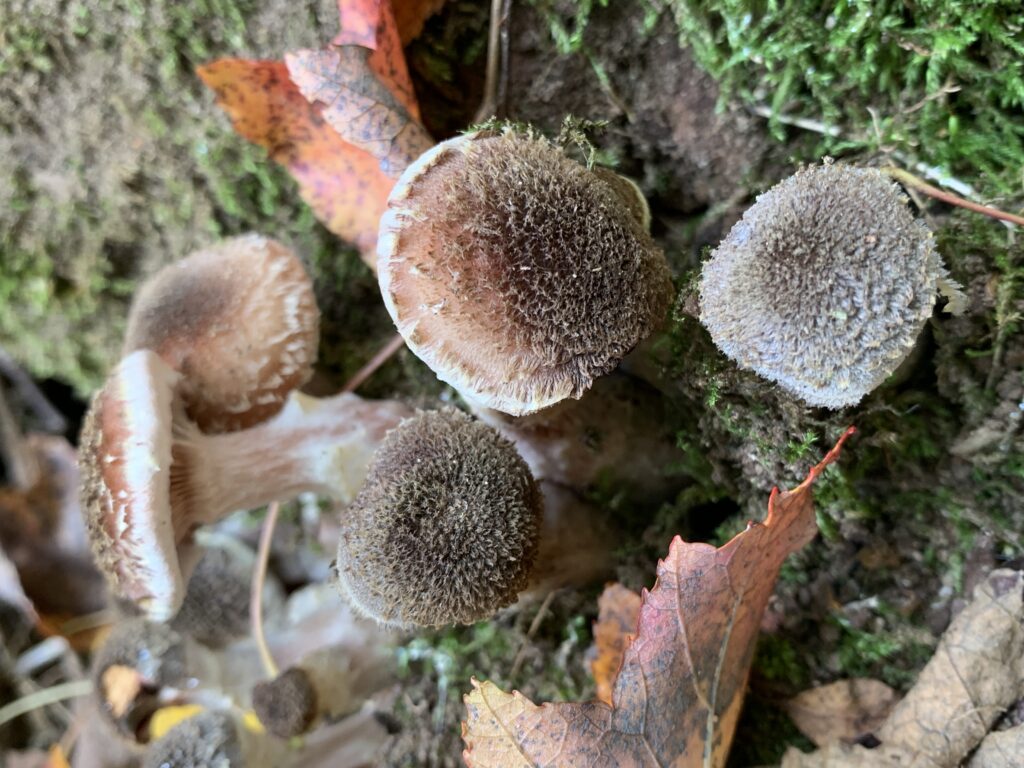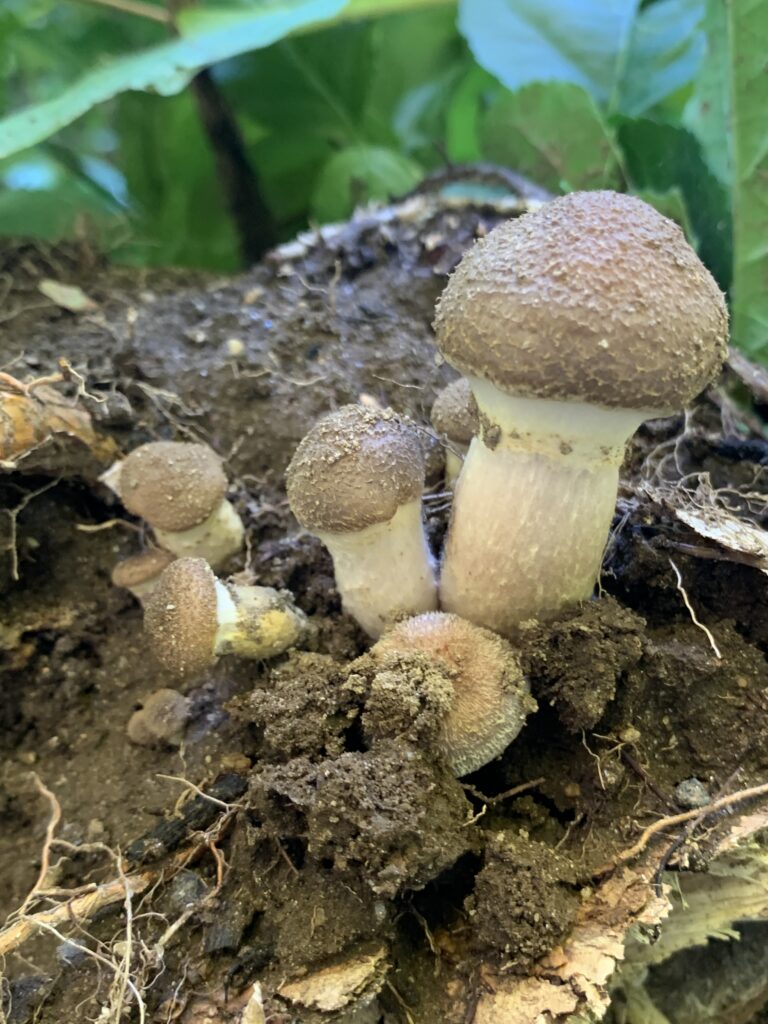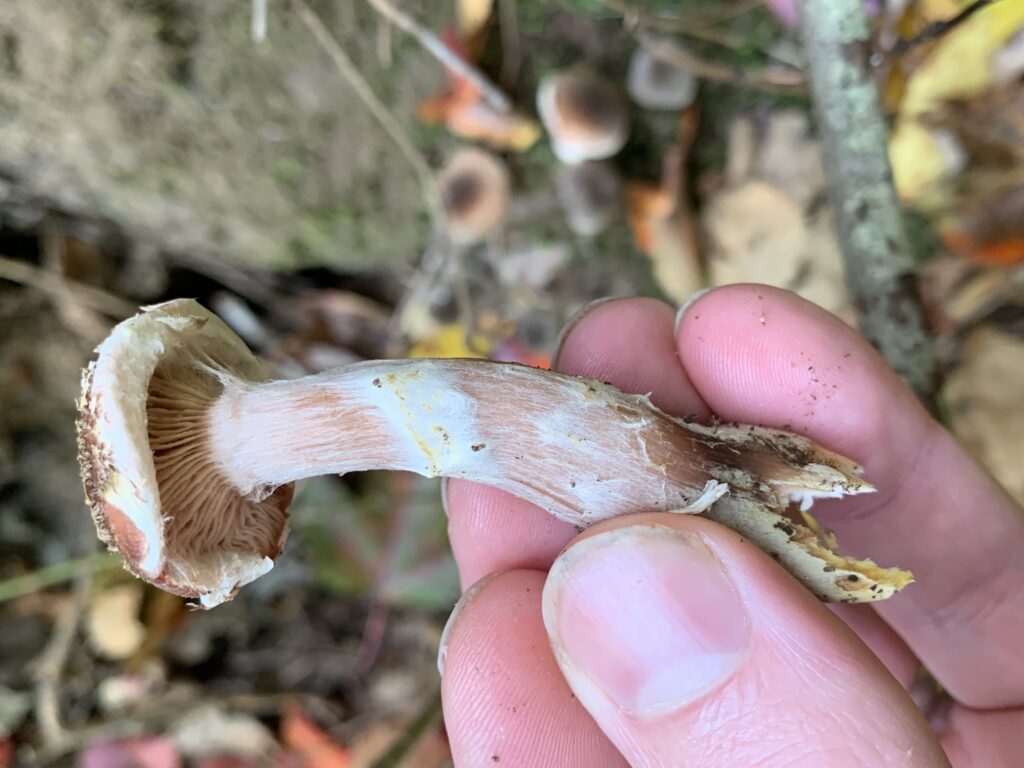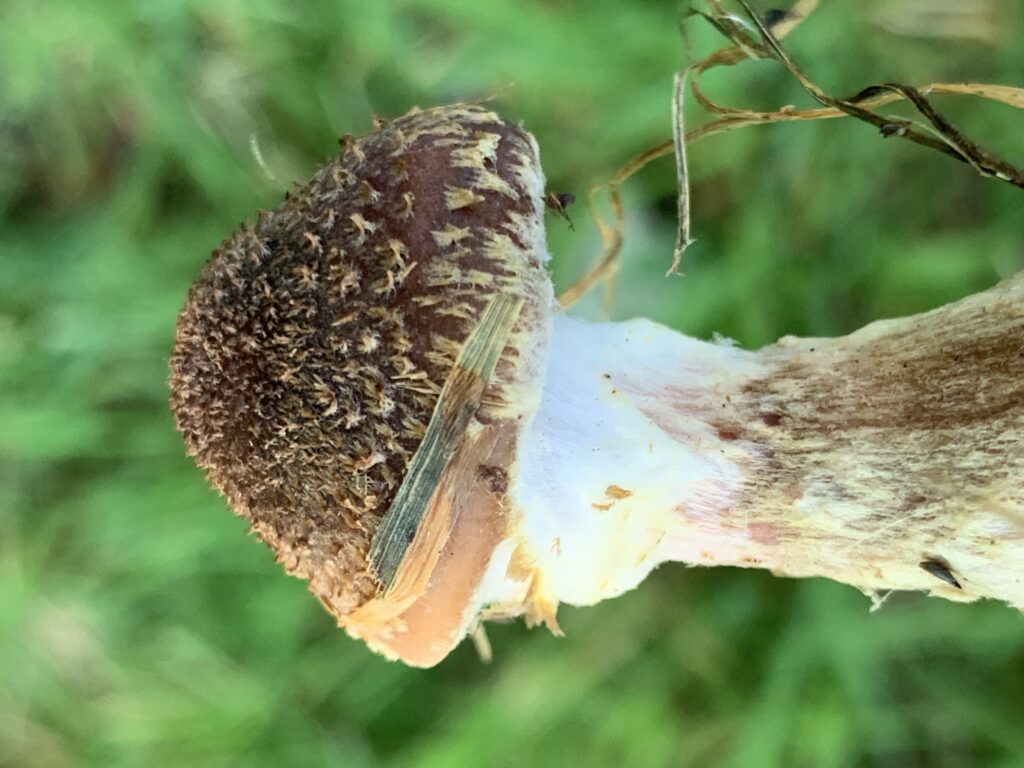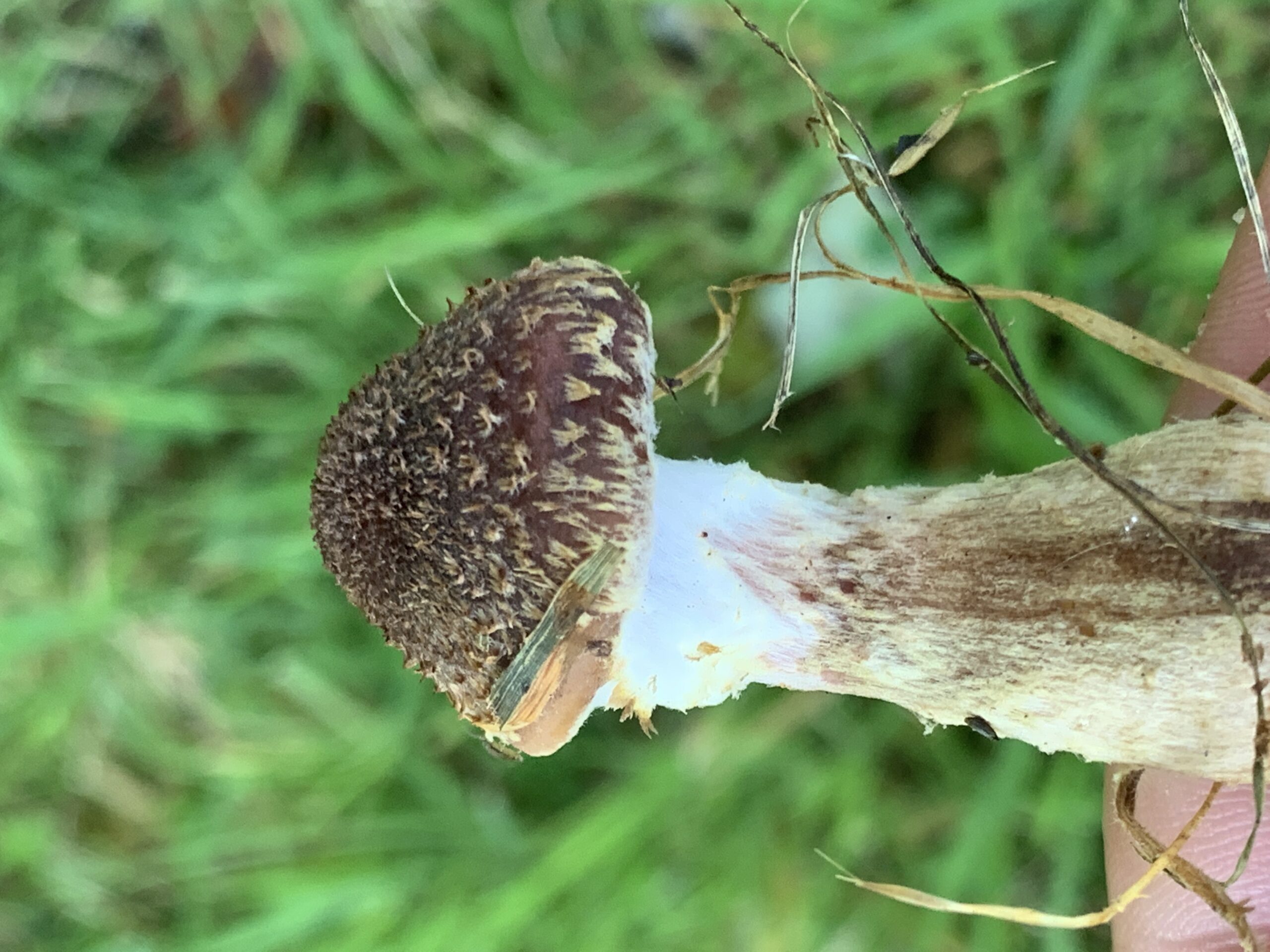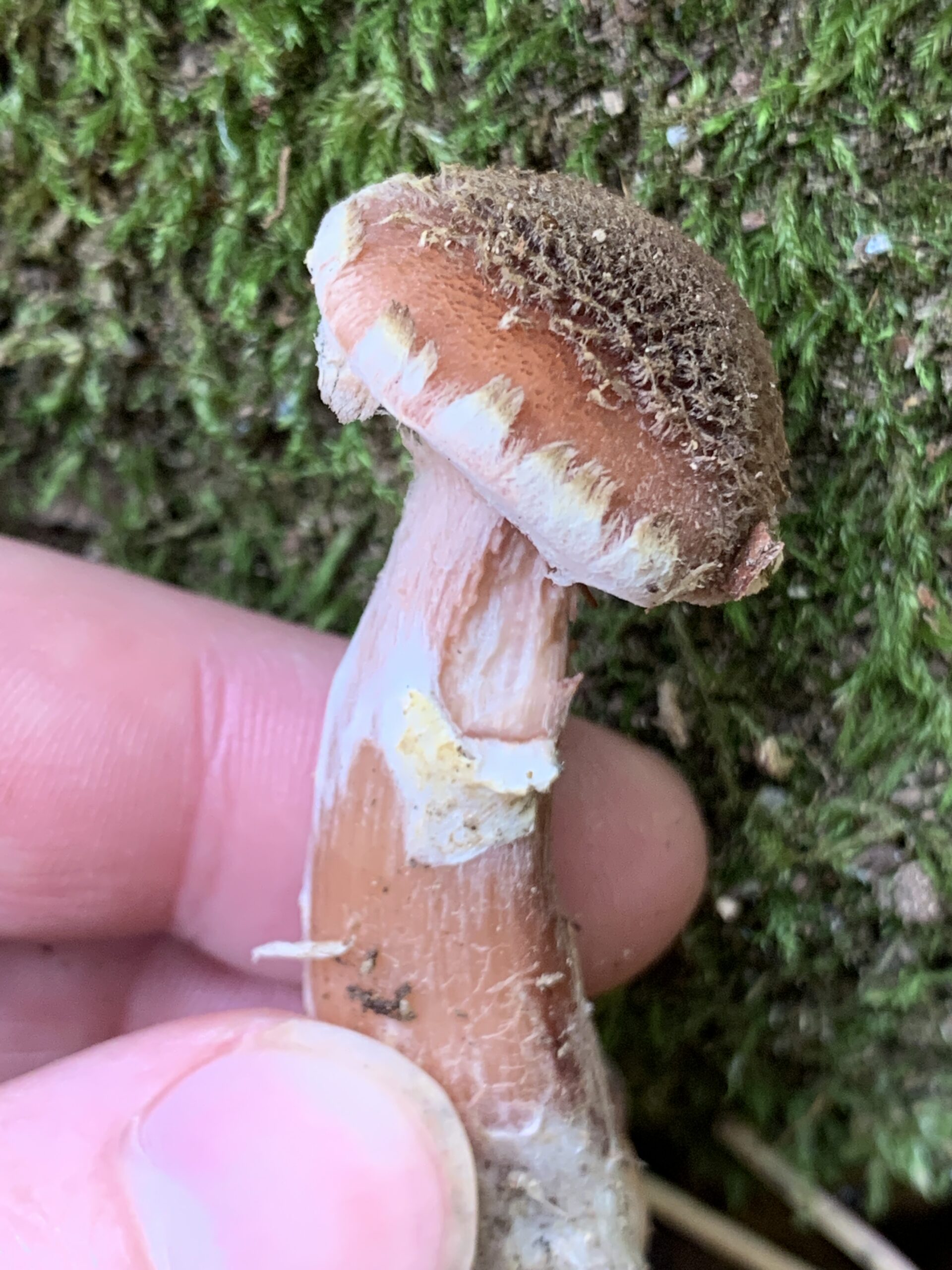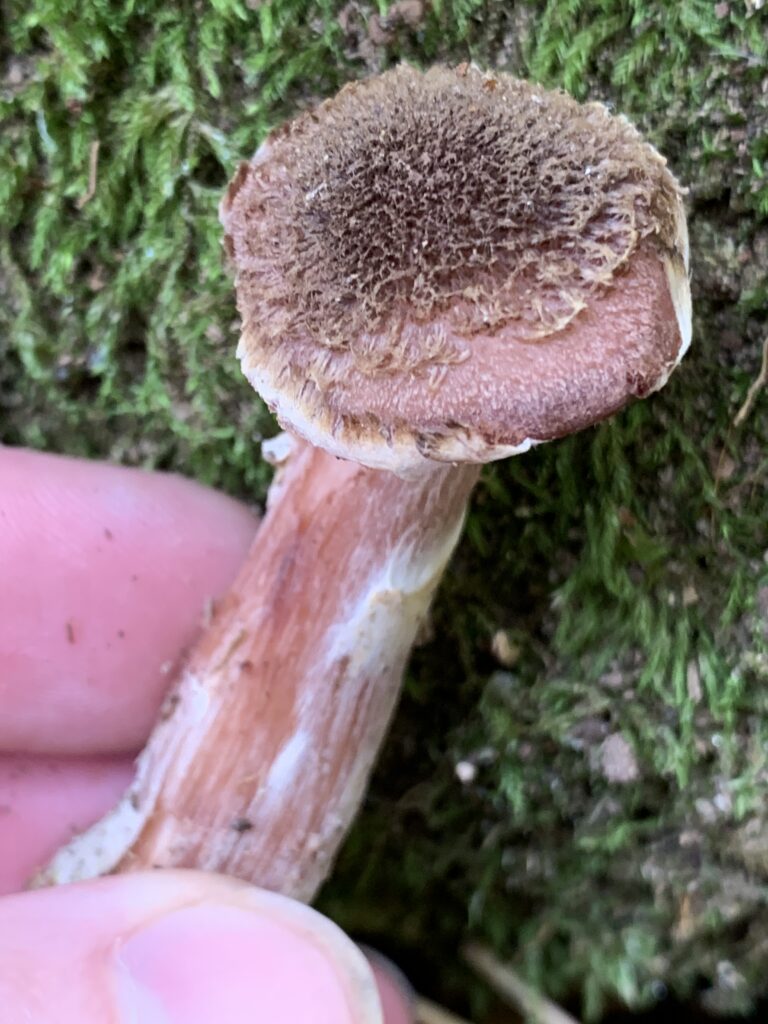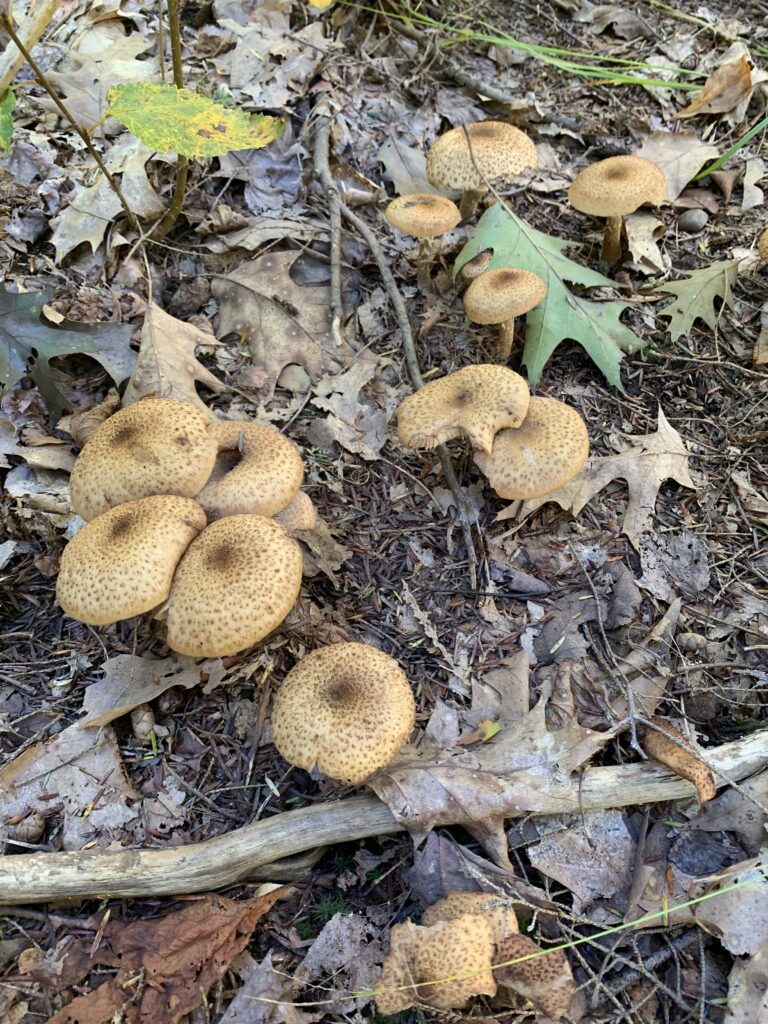
Armillaria gallica is often referred to as the bulbous honey mushroom. Unlike Armillaria mellea and Armillaria solidipes, it frequently grows singly or in very small clusters of only a few mushrooms, and they are spread out over a wider surface area of the ground. However, it can also grow directly on wood. The brownish cap ages to a honey color like all honey mushrooms. It also has prominent dark fibers on the surface radiating outwards from the center. It has white to honey-colored gills that release white spores. The stem is typically slender but tough, and unlike other honey mushrooms, it does NOT taper at the base. Instead, it flares out into a bulbous shape, making each mushroom appear more like closely spaced individuals rather than a conjoined cluster of fruits. They often have yellow coloring at the very lowest portions of the stem base beneath the leaves. The stem will also have a substantial ring left from the partial veil. While the veil and most of the ring will be whitish, it will frequently have a yellowish-brown or brown edge or underside on the ring, which is similar in color to the young cap. But more notably, especially in younger specimens, there are fragile fluffy or cottony remnants of the veil attached to the ring, or draped along the stem or hanging from the edges of the cap. This will not always be present and can be seen in other honey mushroom species as well, but it seems to be more noticeable on Armillaria gallica, perhaps because they are much smaller than other honey mushrooms. Like other honey mushrooms, in older specimens, the stem may darken near the base of the cluster. The flesh itself is white, but when cut or bruised, it may stain reddish-brown. This isn’t a characteristic that I often hear about or read about, but it seems to be a common feature across other species of Armillaria mushrooms.
It’s not considered a beginner mushroom because it shares features with some deadly mushrooms (white gills, white spores, and a ring on the stem). It is also commonly said that the Deadly Galerina is a poisonous look-alike because it also has a dark cap, honey-colored gills, a ring on the stem, grows on wood, and appears in the same season as honey mushrooms. While I personally don’t consider other Armillaria species as look-alikes, with Armillaria gallica, I can easily see a careless forager picking up some Galerina by accident if they were moving quickly and not checking each one. Always check each one to be sure that all the necessary identifying characteristics are there before they go into your bag. Galerinas have smooth caps and brown spores, but be sure to study both mushrooms in the field, consult multiple information sources, or get an experienced forager to help. Like other honey mushrooms, Armillaria gallica can be quite abundant in the fall. They typically fruit a little later than Armillaria mellea and Armillaria solidipes. So, I look forward to seeing them each year just after my other honey holes are drying up. It may take some time for you to be certain that you have the right mushroom, especially since these are not the brighter and more distinct yellow color of Armillaria mellea, but they’re a good find once you are comfortable with them.
Unlike other honey mushrooms, with Armillaria gallica, I don’t discriminate as much when it comes to age. Because of their small size, I’m happy to take them even if the caps are fully open. It really depends on what I’m cooking whether I keep the stems or not, though. The stems of all honey mushrooms toughen up quite a bit once the cap is open, and in most cases, I will discard the majority of the stem. However, with Armillaria gallica, I will sometimes keep them and finely chop them for additional texture instead of discarding them.


